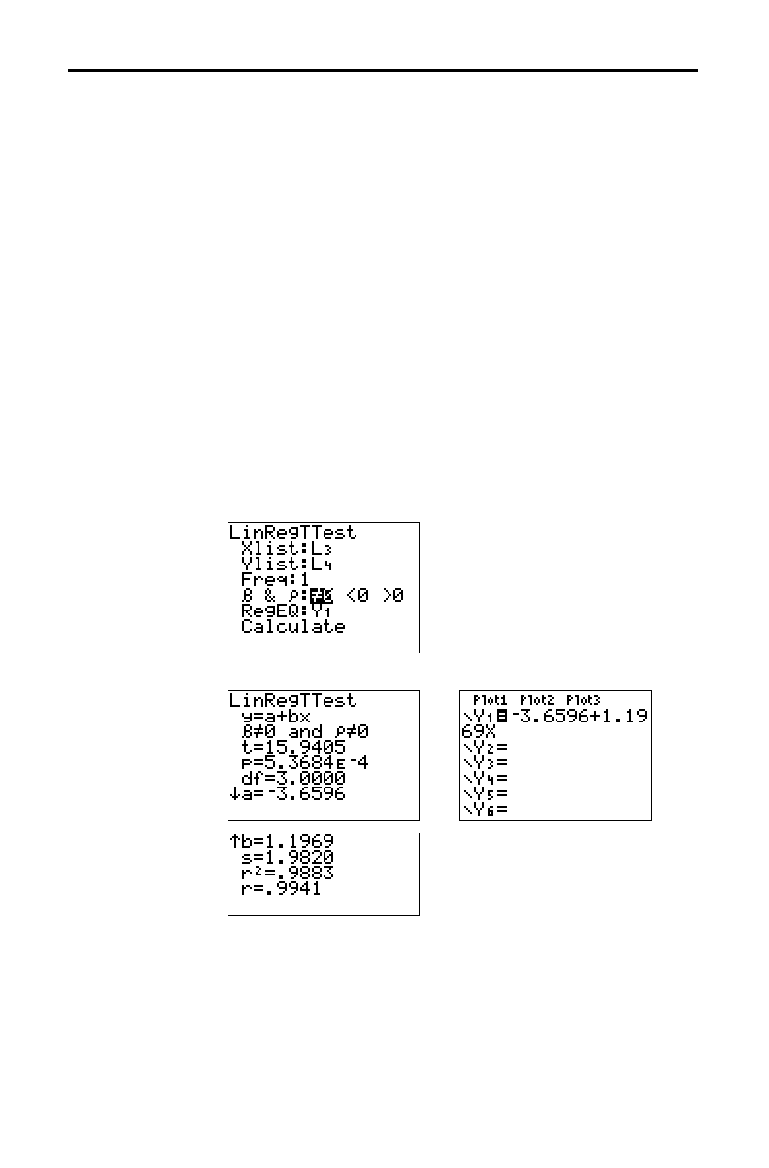
13-24 Inferential Statistics and Distributions
8313INFE.DOC TI-83 international English Bob Fedorisko Revised: 02/19/01 12:47 PM Printed: 02/19/01 1:38 PM
Page 24 of 36
LinRegTTest (linear regression
t
test; item E) computes a
linear regression on the given data and a
t
test on the value
of slope
b
and the correlation coefficient
r
for the equation
y
=
a
+
b
x. It tests the null hypothesis H
0
:
b
=0 (equivalently,
r
=0) against one of the alternatives below.
•
H
a
:
bƒ
0 and
rƒ
0 (
b
&
r
:
ƒ
0
)
•
H
a
:
b
<0 and
r
<0 (
b
&
r
:<0
)
•
H
a
:
b
>0 and
r
>0 (
b
&
r
:>0
)
The regression equation is automatically stored to
RegEQ
(
VARS Statistics EQ
secondary menu). If you enter a
Y=
variable name at the RegEQ: prompt, the calculated
regression equation is automatically stored to the specified
Y=
equation. In the example below, the regression equation
is stored to
Y
1
, which is then selected (turned on).
In the example:
L
3
={38 56 59 64 74}
L
4
={41 63 70 72 84}
Input:
,
Calculated results:
When LinRegTTest is executed, the list of residuals is
created and stored to the list name
RESID automatically.
RESID is placed on the
LIST NAMES
menu.
Note:
For the regression equation, you can use the fix-decimal mode
setting to control the number of digits stored after the decimal point
(Chapter 1). However, limiting the number of digits to a small number
could affect the accuracy of the fit.
LinRegTTest


















